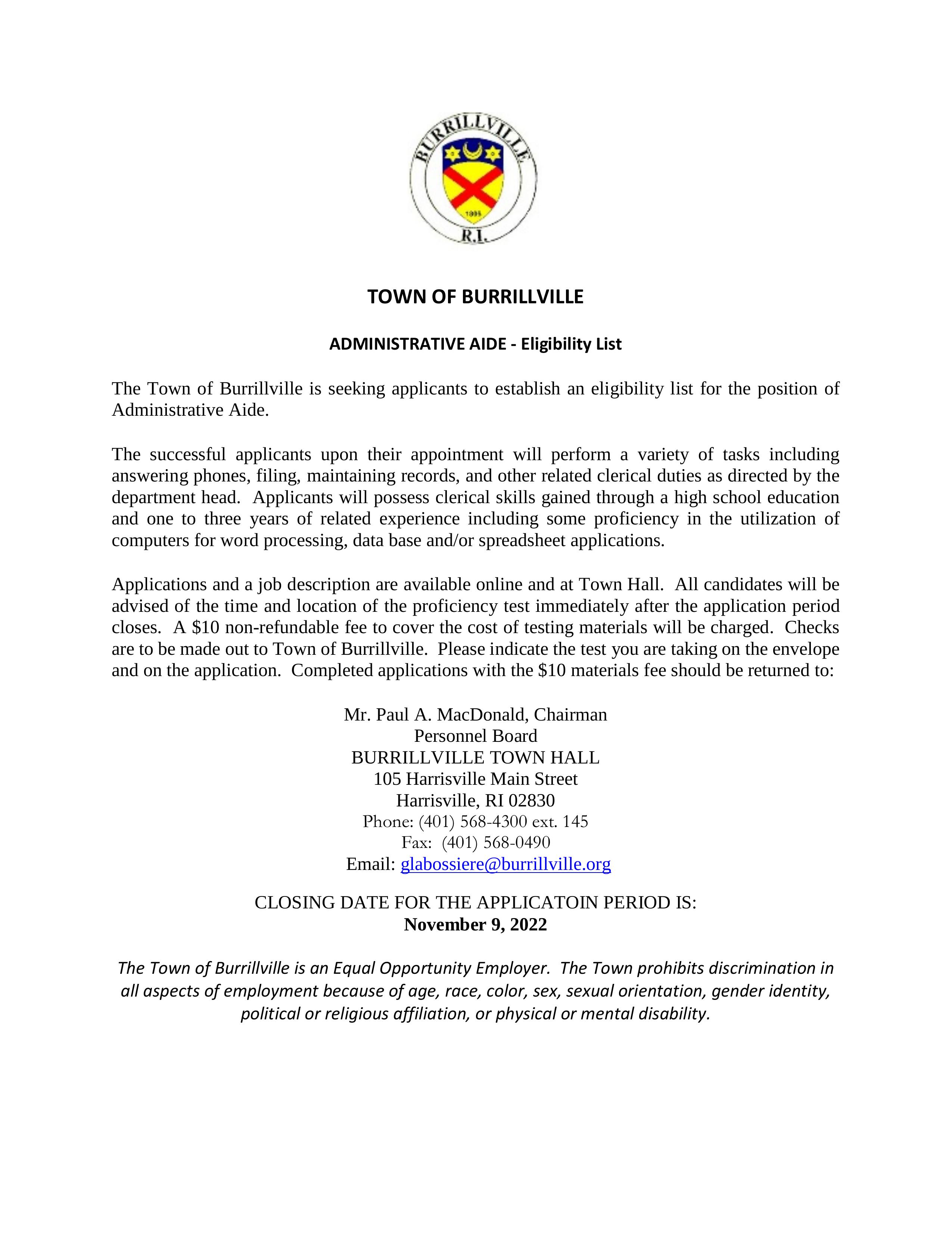BURRILLVILLE – Interest rates and inflation are rising; however, several homeowners in bucolic Burrillville received a substantial financial break and are living in better-than-average homes, built in part by their own labor, and thanks in part to taxpayers.
On Thursday, Oct. 27, NeighborWorks Blackstone River Valley brought the homeowners, funders, politicians, and others to Pascoag for speeches, home tours, a ribbon cutting for the seven new homes and the groundbreaking for the next eight homes in the Fernwood neighborhood project built through the United States Department of Agriculture’s Mutual Self-Help Housing Program. Fernwood is a sub-development on George Eddy Road, a cul-de-sac not far from Echo Lake.
NWBRV is part of NeighborWorks America, “the country’s preeminent leader in affordable housing and community development.”
In his remarks at Fernwood, U.S. Sen. Jack Reed said the Mutual Self-Help Housing Program requires participants to put in, “sweat equity”; that is, the people build their own homes, with the assistance of professionals. He praised Fernwood as a, “beautiful section of homes,” that, “complements and enhances the community.” Such projects require putting together “lots” of different federal programs and state, according to the senator. Reed said there’s an affordable housing crisis in America – and in Rhode Island. “We have to build more housing,” he told the audience.
Sen. Sheldon Whitehouse praised Reed as, “a real national housing champion,” who has received many awards and is senior Democrat on the banking committee.
“Homeownership is the pathway for families for economic security,” said Whitehouse. “Thanks to the village, that it takes to make one of these projects actually work,” he told the audience of about two dozen, most connected to the project.”
Missing from the group at Fernwood was local representation, such as from the Burrillville Town Council and from area representation in the Rhode Island General Assembly.
In a phone interview after the Fernwood gathering, Burrillville Town Council President Donald Fox said the town of Burrillville is, “one of the few that met the ten percent threshold,” for affordable housing in the state.
Fox and the Town Council, as well a Rhode Island General Assembly members who represent Burrillville, Sen. Jessica de la Cruz, Rep. Brian Newberry and Representative David K Place were not invited to the Fernwood event and or did not even know of it.
In a phone interview Place said after he and other legislators found out, they contacted Sen. Whitehouse and were “assured” there was “no snub” – but just a, “miscommunication.”
Meg Rego of NWBRV said the absence of local officials was an oversight.
“We’ve since reached out to the town manager’s office and Burrillville Redevelopment Agency to apologize for the mistake and offer a tour,” Rego said. “We’re appreciative for the support the program has received from Burrillville since the projects inception 10 plus years ago, and look forward to continuing the collaboration as we work with homeowners to complete the final eight houses in this community.”
Place said sweat equity for affordable housing projects, “is a great idea.” Subsidized property, without a personal commitment to maintain it, is property that can possibly be brought down by two or three people, but those who build their own house take pride in them, he said. The Fernwood homeowners must meet particular income requirements, and some of the homeowners are single parents or elderly, he said. The homeowners are restricted if they choose to eventually sell the homes they built.
“They shouldn’t be able to profit” off the house, Place said.
In attendance at Fernwood was Scott Soares, USDA State Director for Rural Development in Massachusetts, Rhode Island, and Connecticut, who was appointed by the Biden Administration earlier in 2022.
He said in 2016 he had the, “privilege to serve with the Obama administration in the same capacity as state director for Massachusetts, Connecticut, and Rhode Island.” Soares told the audience, “partnerships are what’s critical,” for success in such housing projects. He said it took until 2003, “to get at the land” to allow the project to happen in Pascoag.
USDA as a federal agency is involved in rural development, back to the redevelopment and resettlement administration era, and today through, “historic investments the Biden/Harris administration has been making.”
Kathy Orovitz, president/CEO of Navigant Credit Union, said Reed and Whitehouse’s work in Washington and support for Rhode Island regarding housing is, “tremendous.” About Navigant’s involvement in the project Orovitz said, “this is completely aligned with our mission and we were happy to provide the financing,” and, “this is only the beginning.”
“We have more and more affordable housing; this is just the start,” said Josh Saal, the state’s, “housing czar,” aka Rhode Island Deputy Secretary of Commerce for Housing. The plan is to create “a more accessible and sustainable future for all Rhode Islanders,” he said. More than just building homes, Saal says the intent is to build communities: “that’s where our strength lies.”
On the NeighborWorks Blackstone River Valley website is stated it is a community development corporation, which is a concept that sprang out of the 1960s. Nationwide, community development corporations are involved in childcare centers, neighborhood shopping centers, community planning ethics, charter schools, after-school programs, and social services. NWBRV is, “committed to upholding” the standards of cdc, according to the website.
“Housing is healthcare”, said Carolyn Belisle of Blue Cross Blue Shield of RI. Belisle said there are, “mounds of evidence,” that housing is a, “key social determinant of one’s health.”
“If we can address the social factors negatively impacting health early, before they can do irreparable harm, we have a better chance of significantly improving the people’s overall health and well-being,” said Belisle.
“I don’t think I need to oversell to this group,” she said. “It’s very clear there is a much greater risk of continued poor health outcomes going forward if we don’t solve our housing challenges as a state.”
A major focus of Blue Cross Blue Shield of RI’s, “significant philanthropy,” is, “to support housing interventions across the state,” she said.
Belisle says the annual Blue Cross Blue Shield of RI and Brown University School of Public Health’s RI Life Index shows the, “greatest barrier cited by participants, aside from cost of living, is access to high quality and affordable healthcare it’s an issue for everyone in our state.” RI Life Index is supposed to, “capture Rhode Islanders’ perceptions of social determinants of health and well-being,” according to its homepage.
Cost of living and other factors are affecting homeownership. For example, “privately‐owned housing units authorized by building permits in September were at a seasonally adjusted annual rate of 1,564,000. This is 1.4 percent above the revised August rate of 1,542,000, but is 3.2 percent below the September 2021 rate of 1,615,000,” reported The United States Census Bureau in October 2022.
Taxpayers had a large hand in the building of the new homes in Pascoag, such as through Building Homes Rhode Island, a state program that, “thanks to the majority of voters in 2006, and again in 2012 and 2016, that approved a $50 million bond to create affordable apartments and modest single-family homes throughout the state,” according to Housing Works RI at Roger Williams University. Approval of bonds means taxpayers are promising to pay back debt with interest, whether indirectly or directly.
The new homeowners who built their Fernwood homes are benefiting.
Applicants for homeownership, “are processed in the order that they are received,” said Rego. She further explains: Applicants are either permanent residents or American citizens, and mortgage ready in terms of credit score and debt, and income qualify.
Applicants are referred to the program or find out about the program through flyers and post cards circulated around the community. The Burrillville School Department has allowed NWBRV to send post cards home in student backpacks, and other potential homeowners attended an open house. Some applicants know about the opportunity from those already in the program.
“They see what a friend or colleague has accomplished and want to build their own home as well,“ Rego said.
The houses in Fernwood Phase III – the phase that was just completed – cost and average of $271,500 each, including the lot and materials.

The homeowners’ sweat equity helps keep the cost down as they complete 65-70 percent of the overall build, with everything but the foundation, main framing, roofing, and plumbing/electrical/heating. The market rate for comparable houses in the area range from $360-$400K when factoring in number of bedrooms, bathrooms and lot size.
The mortgage per homeowner ranges from $160-$195K. Each homeowner’s cost is determined based in the median family income.
The owners have mortgages through the USDA Rural Development’s 502 loan program. This program provides interest rates as low as 1 percent, which help to provide affordability.
Homes are built to energy star levels to help families save on utilities and promote affordability.
“These homes belong to the homeowners,” Rego said. “They pay property taxes at the values assessed by the local tax assessor.”
Public data lists one house in the community as being tax assessed at $260,100 and contributing $4,271 in property taxes in 2021. The homeowners also pay their own home insurance, utilities, etc. The homes are deed restricted affordable housing for 30 years. If a homeowner wants to sell, they need to sell the home to a family that qualifies for affordable housing – making 80 percent of the area median income or less, according to the Office of Housing and Urban Development. For instance, in 2022, a family of four would income qualify to purchase one of these homes if they make $77,350 or less.
Rego explains the sweat equity means, “Families commit to having two family members work for eight hours every Saturday and Sunday once the build process begins, averaging 30-35 hours/week of build time per family. Over the course of the build, families will contribute 2,000 hours to the project. Families complete 65-70 percent of the total build. This includes siding, interior framing, tiling, sheet rocking, painting, installing cabinets and more
The learning process is ongoing for the duration of the build as the work is constantly evolving throughout the build process.
“BCBSRI provided volunteers to support the homeowners with their build as part of their corporate Blue Across RI Day,” said Rego. “These volunteers then continued to come out to the site to support the homeowners with their homes. BCBSRI also provided the funding and volunteers to build and install a fitness trail in the woods adjacent to the neighborhood.”
“Fernwood is a neighborhood much like any others you’d see in the community,” Rego said. “It’s comprised of individual homeowners who are responsible for their own properties, landscaping, etc. While no formal neighborhood association exists, one of the factors that makes Fernwood unique, is that each resident has literally spent hundreds of hours helping their neighbors build their homes and they’ve been mutually supported by their neighbors. This fosters strong community ties.”
In addition to Fernwood, NWBRV has worked with the town of Burrillville to develop Greenridge Commons at Garvey Ledges Lane and Main Street in Pascoag and the Stillwater Mill in Harrisville.










